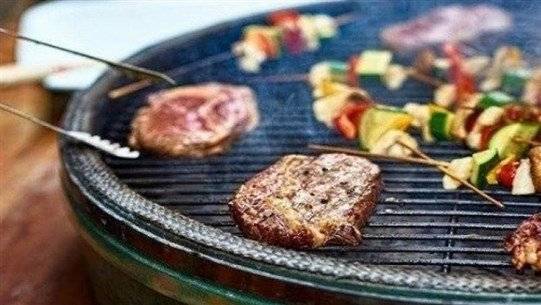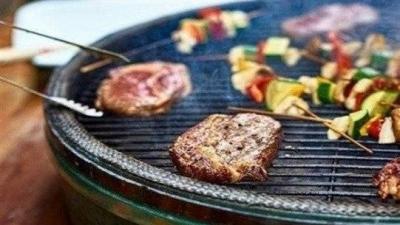Cooking on a grill may seem simple, but scientists say there are many chemical properties that distinguish grilling from other cooking methods and result in a delicious experience.
**Cooking with Fire**
During grilling, hot grill grates heat the food through direct contact via a process known as conduction. The food is also heated and cooked by absorbing radiation directly from the flames below. The resulting range of temperatures creates a complex mixture of flavors and aromas. When cooking on a stovetop, there is much less radiation, and most cooking occurs where the food is in direct contact with the pan.
When cooking meat at high temperatures—such as the excessive heat from a grill—the first thing that happens is that the moisture near the surface of the meat begins to boil. Once the surface dries out, the heat causes the proteins and sugars on the outer surface of the meat to undergo a reaction called the Maillard reaction. This reaction produces a complex mixture of molecules that makes food taste saltier or "meatier" and adds depth to aromas and flavors. The reactions and flavors produced are affected by various factors, including temperature, acidity, and the ingredients in any sauces or marinades.
A similar process occurs with vegetables; grilling allows water to evaporate or drip away without getting stuck in the pan. These reactions transform carbohydrates and sugars into smaller compounds like maltol—which has a warm flavor—and furane—which tastes nutty, meaty, and caramel-like.
**The Crunchy Taste**
Another distinctive feature of grilled foods is the unique crunchy taste they develop. When foods are exposed to heat for extended periods, the non-carbon atoms in the food break down, leaving behind crispy black carbon. This is the process of charring or burning. Almost no one enjoys a completely burnt piece of meat, but a little crunchy flavor can add significant depth to foods. Cooking over direct grilling heat allows you to add as much char to suit your taste.
**Smoky Flavors**
The ideal grilled flavor is smoky; cooking over wood or charcoal involves a lot of smoke. Even on a gas stove, melting fats drip onto the heat source and produce smoke. As smoke circulates around grilled food, it absorbs its flavor. Smoke consists of gases, water vapor, and tiny solid particles from the fuel. Burning wood breaks down particles called lignins, which turn into smaller organic molecules—including syringol and guaiacol—responsible for the perfect smoky flavor. When smoke contacts food, the smoke's components can be absorbed. Food is particularly good at absorbing smoky flavors because it contains both fat and water, each of which interacts with different types of molecules. Chemically, fats are nonpolar—meaning they have a weak electrical charge—and easily pick up other nonpolar molecules.




